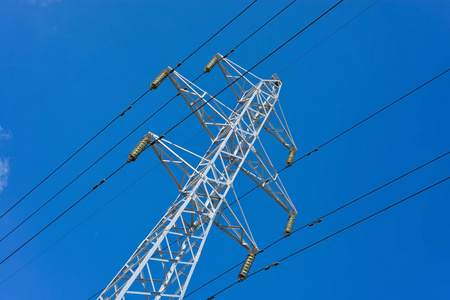Introduction
In the realm of electronic communication and transmission, coaxial cables play a vital role in ensuring the efficient and reliable transfer of signals. One type of coaxial cable that stands out for its effectiveness is the coaxial shielded cable. This article aims to explore the properties, construction, and applications of coaxial shielded cables, highlighting their significance in various industries and technologies.
Understanding Coaxial Shielded Cable
Coaxial shielded cables, commonly referred to as coax cables, are designed to carry high-frequency electrical signals with minimal interference and loss. They consist of multiple layers, each serving a specific purpose to ensure the quality of signal transmission. The core components of a coaxial shielded cable include the inner conductor, dielectric insulator, metallic shield, and outer sheath.
The inner conductor of a coaxial shielded cable is typically made of copper or aluminum, providing the path for signal transmission. It is surrounded by the dielectric insulator, which serves to maintain the integrity of the electrical signal by preventing interference and maintaining proper impedance.
The metallic shield is a critical component of a coaxial shielded cable, as it provides protection against external electromagnetic interference (EMI) and radio frequency interference (RFI). The shield can be composed of braided wire or foil, depending on the specific requirements of the application. The quality and coverage of the shield greatly influence the cable's performance in terms of signal integrity and noise reduction.
Finally, the outer sheath of the coaxial shielded cable serves as a protective layer, safeguarding the internal components from environmental factors such as moisture, abrasion, and physical damage. The overall construction of a coaxial shielded cable is designed to maintain signal integrity over long distances and under varying conditions, making it a preferred choice for critical communication systems.
Properties of Coaxial Shielded Cable
Coaxial shielded cables exhibit several key properties that make them ideal for a wide range of applications in industries such as telecommunications, broadcasting, aerospace, and defense. Understanding these properties is essential for selecting the right coaxial cable for specific requirements. Some of the key properties of coaxial shielded cables include:
1. Low Attenuation: Coaxial shielded cables are known for their low signal loss or attenuation over long distances. The design of the cable, including the dielectric insulator and shielding, helps minimize the loss of signal strength, ensuring high-quality transmission.
2. Impedance Consistency: Coaxial shielded cables maintain a consistent impedance throughout the length of the cable, which is crucial for proper signal transmission. The dielectric material and construction of the cable play a significant role in maintaining impedance stability.
3. Shielding Effectiveness: The shielding provided by the metallic layer in coaxial shielded cables offers high effectiveness in reducing EMI and RFI. This shielding capability ensures that external interference does not disrupt the transmitted signal, leading to reliable communication.
4. Wide Bandwidth: Coaxial shielded cables are capable of carrying signals across a wide bandwidth, making them suitable for high-frequency applications. They can support various data rates and transmission requirements, providing flexibility for diverse communication needs.
5. Durability and Reliability: The robust construction of coaxial shielded cables makes them highly durable and reliable for long-term use. They are designed to withstand harsh environmental conditions and mechanical stress, making them suitable for outdoor and industrial applications.
6. Flexibility and Installation: Coaxial shielded cables are available in various sizes and configurations, offering flexibility in installation and routing. This versatility allows for easy deployment in different settings, including buildings, vehicles, and machinery.
Applications of Coaxial Shielded Cable
The unique properties of coaxial shielded cables make them a preferred choice in numerous applications where reliable signal transmission is critical. Some common applications of coaxial shielded cables include:
1. Telecommunications: Coaxial shielded cables are extensively used in telecommunications networks for transmitting voice, data, and video signals. Rubber sheathed extension cables are commonly employed in cable television (CATV) systems, internet service providers (ISPs), and high-speed broadband connections.
2. Broadcasting and Audio/Video: Coaxial shielded cables play a crucial role in broadcasting and audio/video production, where high-quality signal transmission is essential. They are used for connecting cameras, microphones, monitors, and other audio/video equipment in studios and live production settings.

3. Aerospace and Defense: In aerospace and defense industries, coaxial shielded cables are utilized for communication systems, radar systems, navigation equipment, and military applications. Their high reliability and secure signal transmission make them ideal for mission-critical operations.
4. Industrial Automation: Coaxial shielded cables find applications in industrial automation for connecting sensors, actuators, controllers, and other equipment in manufacturing processes. They help ensure precise and uninterrupted communication for efficient automation systems.
5. Medical Equipment: In the healthcare sector, coaxial shielded cables are used in medical equipment and devices that require accurate signal transmission and noise immunity. They are essential for applications such as MRI machines, ultrasound systems, and patient monitoring devices.
6. Automotive Electronics: Coaxial shielded cables are employed in automotive electronics for connecting various components, including GPS systems, entertainment systems, and communication modules. Their ability to resist EMI and RFI interference is crucial for reliable performance in vehicles.
Conclusion
Coaxial shielded cables play a vital role in modern communication systems, offering reliable signal transmission and protection against external interference. Their unique properties, including low attenuation, impedance consistency, shielding effectiveness, and durability, make them a preferred choice for a wide range of applications across different industries.
Understanding the construction, properties, and applications of coaxial shielded cables is essential for selecting the right cable type for specific requirements. Whether in telecommunications, broadcasting, aerospace, defense, industrial automation, medical equipment, or automotive electronics, coaxial shielded cables continue to be a dependable solution for ensuring seamless communication and data transmission.
In conclusion, the versatility and effectiveness of coaxial shielded cables make them indispensable in the world of modern technology, where reliable connectivity and signal integrity are paramount. As communication systems evolve and demand high-speed data transfer, coaxial shielded cables will remain a cornerstone in enabling seamless and secure communication across various sectors.
